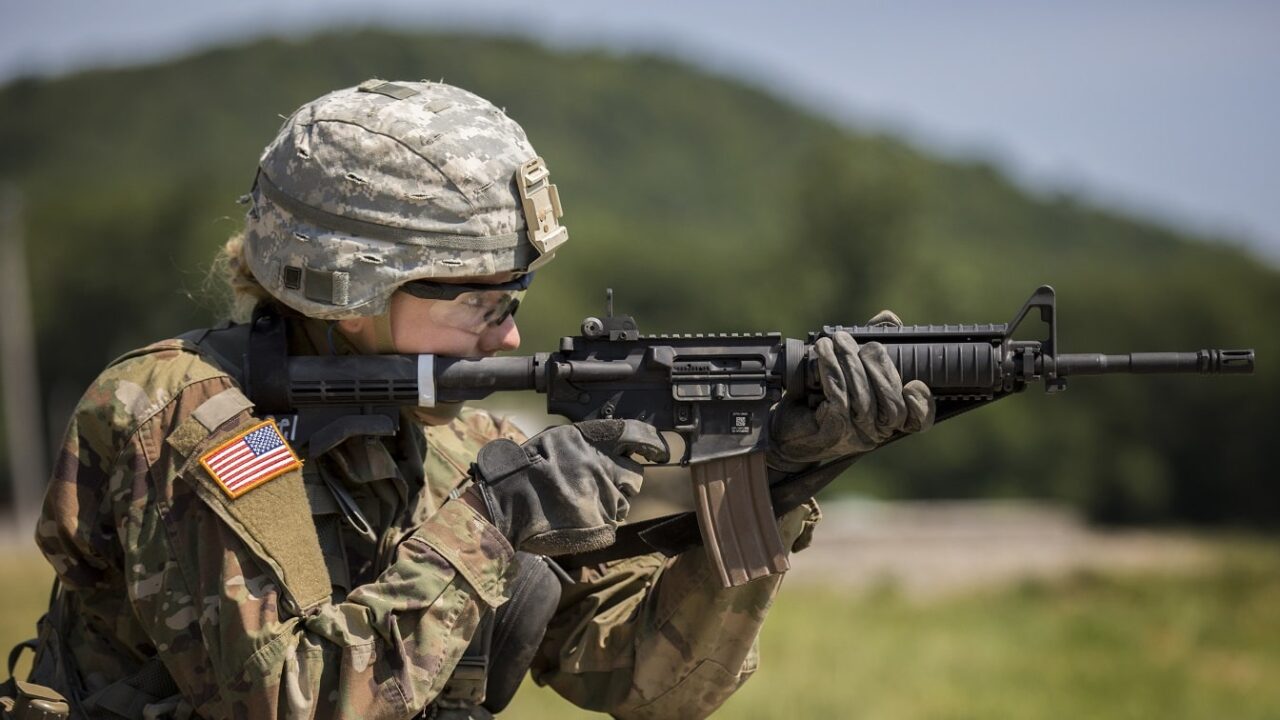Even as it faces eventual replacement, it is easy to see why the M4 Carbine has been described as one of the defining firearms of the 21st century.
Latest (and Greatest) of the M16 Carbines
It would be easy to forgive anyone for mistaking the M4 for an M16 – or even the civilian AR-15 for that matter. The weapon is just the latest carbine variant on the proven platform. Soon after the adoption of the M16 during the Vietnam War, there were efforts to shorten the weapon for close-quarters operations, and the first result was the CAR-15. However, it was far from a perfect solution, which essentially just chopped the barrel down to 10 inches, which reduced its range and accuracy.
During the 1970s, the U.S. military saw little need for a carbine, but in 1982 the Pentagon requested that Colt produce a carbine of the M16A2. That resulted in the development of a new variant – the XM177E2, which was later redesignated the XM4 Carbine, a select-fire weapon that offered semi-automatic and three-round burst fire.
The choice of naming convention was notable as it was meant to be a successor to the M3, the early Cold War variant of the M1 Carbine that was produced in select-fire (like the M2 Carbine) and fitted with a mount designed to accept an infrared sight for use at night or other low-level light conditions.
Essentially a shortened, lightened M16, the M4 Carbine shares more than 80 percent parts commonality with the M16A2, but with the added benefit of a longer barrel length than the CAR-15. The M4’s 14.5-inch barrel is shorter than the 20-inch barrel of the full-size M16A2, and while that comes at a slight cost in long-range performance, it is still nearly five inches longer than the CAR-15. It offers superior performance than the past M16 carbine effort.
Since its introduction, the M4 was meant to replace the M3 .45 caliber submachine gun – aka the “Grease Gun,” and not to be confused with the aforementioned M3 Carbine – as well as selected M9 pistols and M16 rifles.
The M4 has also undergone its own updates, and that has included the M4A1, a fully automatic variant for use by special operations forces. For room-clearing operations, it was determined that full-auto was better than burst fire. It was the first version to feature a removable carry handle but also was equipped with a heavier barrel to accommodate the full-auto fire.
Even as the Next-Generation Squad Weapons could begin to be deployed to units in the next couple of years, it is likely the M4A1 will remain in use with the U.S. for years to come. It is a lasting legacy of Eugene Stoner’s excellent M16 design, just improved for another generation of warfighters.
MORE: World War III – Where Could It Start?
MORE: A U.S.-China War Over Taiwan Would Be Bloody
Now a Senior Editor for 1945, Peter Suciu is a Michigan-based writer who has contributed to more than four dozen magazines, newspapers, and websites. He regularly writes about military hardware, and is the author of several books on military headgear including A Gallery of Military Headdress, which is available on Amazon.com. Peter is also a Contributing Writer for Forbes.

